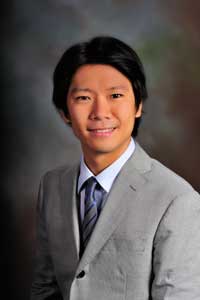Features Archive
Macias and Horiuchi Reveal Mystery Gamma Rays Arise from Ancient Stars
CNP's Oscar Macias and Shunsaku Horiuchi, in collaboration with researchers from Australia, Germany, and New Zealand, have discovered that a mysterious gamma-ray signal from the center of the Milky Way arises from ancient stars, rather than dark matter as previously thought.
When NASA's Fermi Gamma-Ray Space Telescope launched in 2008, it opened an unprecedented view of the gamma-ray sky, bringing a surprising and mysterious gamma-ray signal coming from the center of the Milky Way. It had been speculated that the signal could be a dark matter phenomenon, emitted when dark matter particles collide with their anti-particles. Yet the Galactic center is not only rich in dark matter; it is also populated by stars billions of years old that make up a structure called the Galactic bulge. Macias, Horiuchi, and collaborators showed that the mysterious gamma-ray signal closely traces the distribution of the Galactic bulge, disfavoring a dark matter origin. The team hypothesizes that the signal arises from old neutron stars that been spun up, called millisecond pulsars, which are known emitters of gamma-ray radiation. Thousands of millisecond pulsars are expected to populate the Galactic bulge, blending together to generate a smoothly distributed signal closely following the bulge. Ongoing observational and theoretical work is underway to verify or refute the hypothesis that millisecond pulsars are responsible for the gamma-ray signal.
The results have been published in Nature Astronomy (see here for a copy http://rdcu.be/IScT). The research was funded by the U.S. Department of Energy's Office of Science.


|
| Prof. Shunsaku Horiuch and Dr. Oscar Macias |
Archived Feature Articles
- Shunsaku Horiuchi Solves Dark Matter Mystery (08/27/20)
- Rebekah Pestes Wins the 2020 Scharff-Goldhaber Prize (07/02/20)
- Neutrino Anomalies in Antarctica Explained by Prof. Ian Shoemaker (09/09/20)
- Professor Huber Details How Antineutrino Detectors Could Aid Nuclear Nonproliferation (03/12/20)
- CNP Researchers Publish Neutrino Observation with the Mobile Neutrino Detector (03/11/20)
- CUORE Sets New Limits on Neutrinoless Double Beta Decay (03/11/20)
- CNP scientists Win Cosmology Prize for Research About Dark Matter and Dark Energy (04/29/19)